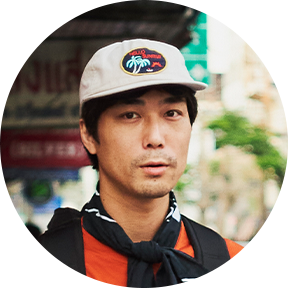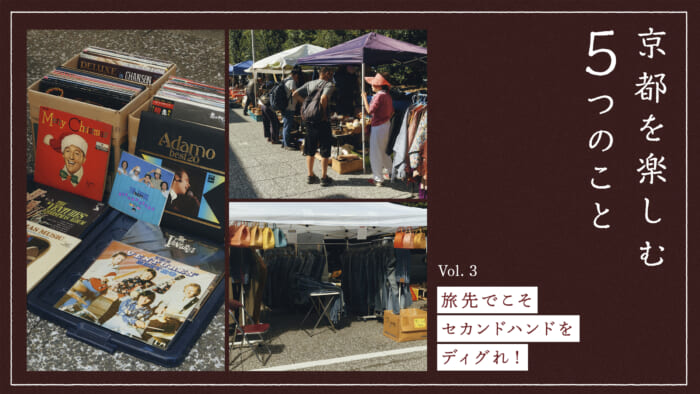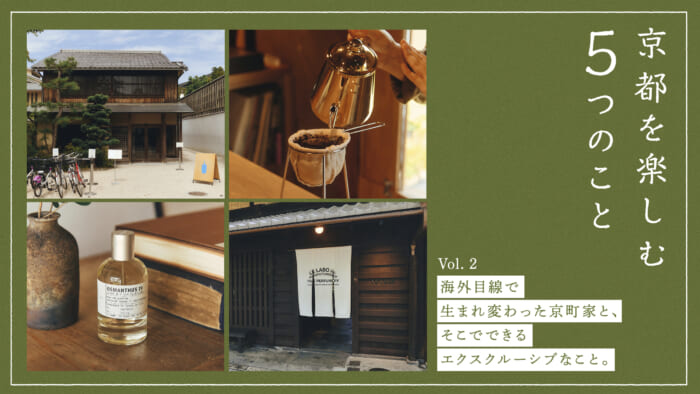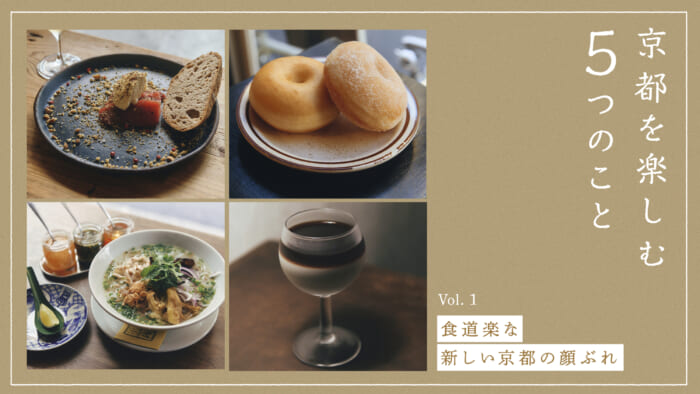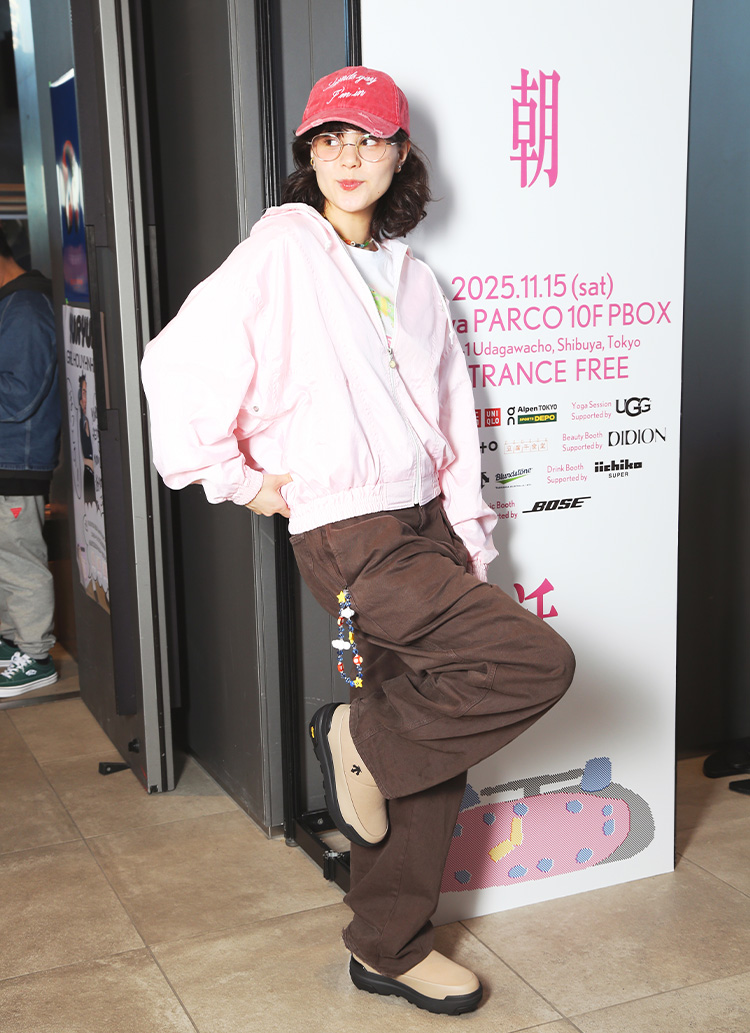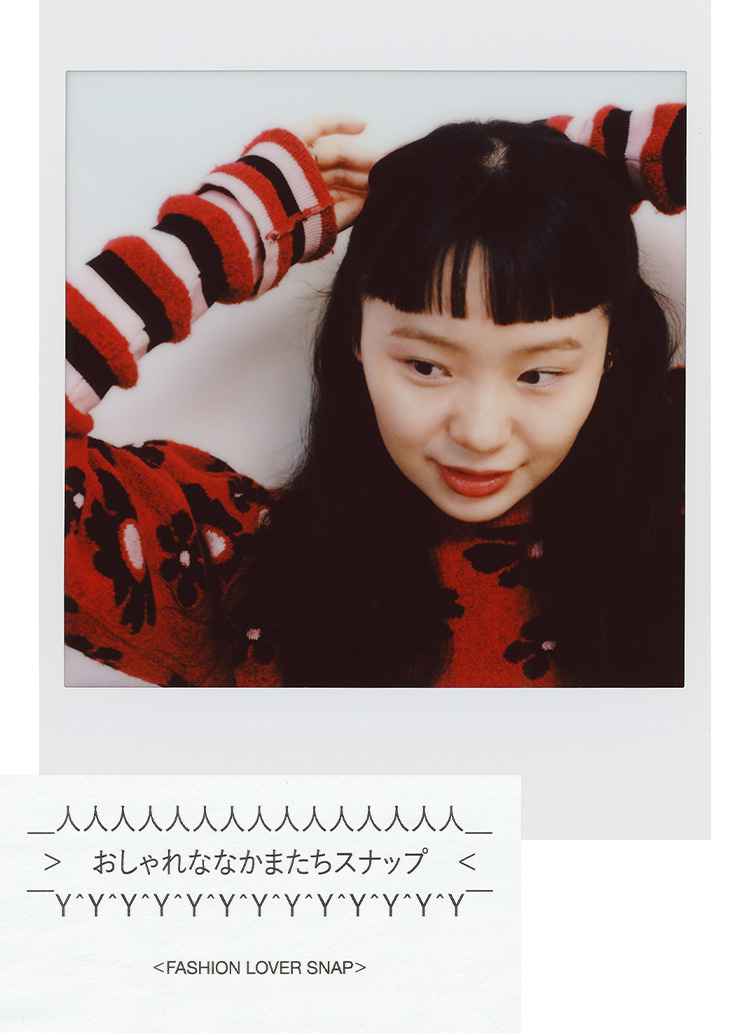December is said to be the best time to see the autumn leaves in Kyoto. Kyoto is compact and easy to get around, and with its historical buildings, old and new stores, and abundant nature just a short distance away, it is a perfect place for a trip. We asked architectural designer Yusuke Seki, who also has an office in Kyoto as part of his multi-location lifestyle, for his recommendations. The theme is "the material!
Photo_Kai Naito
Text_Shinri Kobayashi
Edit_Shuhei Wakiyama
PROFILE
Yusuke Seki is a designer who runs "Yusuke Seki Studio. He has collaborated with fashion brands such as Sakai and Kiko Costadinov, and has designed numerous spaces for restaurants such as Suba and Ogawa Coffee Laboratory, as well as the hotel Kumu Kanazawa in Kanazawa. He lives in Tokyo and Kyoto, where he has a studio and a machiya (townhouse) called "Sekinoya," where he also works as an artist-in-residence.
yusukeseki.com
The bean paste in the right hand and the skin in the left.
At Seki-san's studio, it seems to be a popular practice to buy and eat a set of anko (sweet bean paste) and monaka (a sweet bean paste) from Nakamura Seianjo.
Located near Kitano Tenmangu Shrine, the store offers four types of sets: tsubuan set, tanba set, koshian set, and shiroan set. The tsubuan set is made with azuki beans from Hokkaido, which have an excellent flavor, while the tanba set, also made with tsubuan, is made with tanba azuki beans from Kyoto.
What makes monaka special here is that the bean paste and the inside skin are separate, and you fill them with the bean paste yourself when you eat them. As a result, you can enjoy the crispy texture without the moist skin.
Nakamura Seianjo has been selling an an (sweet bean paste) at its storefront, but since its establishment, its main business has been wholesaling to Japanese confectionery shops. However, in response to requests from customers who were captivated by the deliciousness of the store's an (sweet bean paste), Nakamura Seianjo now sells an an and nanaka (sweet bean paste) set in its stores.
The secret of this delicious taste lies in the carefully selected azuki beans. The azuki beans produced in the fields vary depending on the climate and other factors of the year, so we take the time to re-select the producing area each time. Using these carefully selected azuki beans, they have maintained the traditional method for over 100 years since the company was founded in 1908.
The process of making red bean paste is very time-consuming. For example, when boiling azuki beans, if sugar is added, the beans cannot be boiled any longer. So timing is the key, but it varies from day to day, so it's difficult to be careful. But there is no doubt that the more you try to save labor and make things easier, the worse the taste will be. If you don't mind if the taste goes down, you can make your job as easy as you want.
I feel the pride of craftsmanship in words like these. And water in Kyoto is also a big part of it. Delicious fresh water assembled from deep underground is absolutely necessary for An. Incidentally, other famous foods in Kyoto are sake and tofu, which are also representative of foods that require good water. In other words, it is proof that Kyoto's water is delicious.
The skin of the monaka is made of glutinous rice (100%), which is purchased from a specialized producer. The mochi is not a rice cake shop, but the skin is a skin shop, and when I tried it, I found it to be very crispy. It is glutinous rice, but it is baked, so it is crispy.
The bean paste and the skin. The monaka requires a bit of time and effort to combine the ingredients when eating, and I learned that this time-consuming process produces the finest flavor.
INFOMATION
Address: 88 Daito-cho, Ichijo-dori Gozen-nishiiru, Kamigyo-ku, Kyoto-shi, Kyoto
Business hours: 8:00-17:00
Closed: Wednesday, Sunday
Phone: 075-461-4481
Official Site
From cooking oil to construction oil.
Next, Mr. Seki told us about Yamanaka Oil Store, which claims to be a "specialty store for all kinds of oil. As such, they offer not only cooking oils such as rape oil, sesame oil, egoma oil, and olive oil, but also natural painting oils for floors and walls of buildings.
The store was founded in the Bunsei era (1818-1830) in the late Edo period. It has been roughly 200 years. The basic style of this store is not to make oil, but to purchase oil and sell it. However, their knowledge and passion are not half-baked, and they receive inquiries from all over the country for their knowledge.
For example, natural painting oil used in construction. We often hear the term "sick building syndrome," in which breathing polluted indoor air can cause health problems, and more and more people want buildings that are friendly to people and nature. This trend has brought the store's natural painting oil into the spotlight.
According to the owner, not many carpenters have knowledge of natural painting oil, so many people come to the store to ask about it. This oil is even more valuable in Kyoto, where many historical buildings, in other words, buildings made of wood, still remain. As an architectural designer, Mr. Seki must have been curious about this. Near the store, he has also opened "Heian-no-Miya-no-Yado," an accommodation facility renovated from a traditional Kyoto townhouse and richly coated with natural painting oil.
Inn in the inner sanctuary of Heian Palace.
For olive oil, he goes to great lengths to visit its place of origin in Italy to confirm the taste and growing environment.
When I tasted one of Yamanaka Oil Store's popular products, "Tamajime Shibori Sesame Oil," I was amazed at its rich flavor! Unlike commercial sesame oil, it is a clear amber-colored product with the sweetness and flavor of sesame seeds. After sesame seeds are roasted, they are slowly roasted in a cauldron and slowly pressed using a traditional tamajime machine, which is now few and far between in Japan. The pressed oil is then filtered through Japanese paper to produce a clear sesame oil. Craftsmanship is utilized in every step of the process.
With a history of 200 years, the company's willingness to take on new challenges, from construction to food use, showed the depth of its commitment to even a single material, oil.
INFOMATION
Address: 508 Shimomaruya-cho, Shimotachiuri Dori Chiekoin Nishiiru, Kamigyo-ku, Kyoto City
Hours of operation: 8:30 a.m. to 5:00 p.m.
Closed: Sunday and national holidays
Phone: 075-841-8537
Official Site
White miso for ke, not hare.
Seki-san's recommendation, "The white miso is just so sweet and delicious," led us to Shimamura, a miso wholesaler located east of the Kyoto Gyoen.
Generally, light-colored miso is called shiro-miso (white miso), but "Shimamura" refers to Saikyo miso.
As the name suggests, Saikyo miso originated in the Kansai region centering on Kyoto. Its cream color comes from the fact that it is matured for a shorter period of time than most brown miso, and that it contains roughly two to three times as much koji. It is also characterized by its low salt content and sweet finish.
However, it is not uncommon to find artificially sweetened white miso with sweeteners added to add sweetness. Shimamura, on the other hand, uses koji to bring out the natural sweetness of the miso in order to preserve the original taste of the white miso.
The secret is that the fermentation and ripening process is not simplified, but is carried out at nature's original speed and method. Rather than focusing on the impact of eating out, Shimamura's current white miso is the embodiment of a deep flavor that you will never get tired of as a daily food.
There was a wide selection of miso other than white miso, such as "Kurozu Miso," "Akadashi Miso," and "Germ Rice Miso. The New Year's season is almost upon us, when we will be eating Zoni (a traditional Japanese soup with various ingredients). It would be fun to make zoni using Shimamura's white miso next year, following in the footsteps of Kyoto, where white miso is used for zoni. Shimamura also makes "Zoni White Miso," a traditional Kyoto-style sweet white miso.
The stores we visited, guided by Mr. Seki's recommendations, were all selling high-quality "ingredients," but when we interviewed him for the story, we caught a glimpse of the stores' deep commitment to and passion for the ingredients they use.
INFOMATION
Address: 382-2 Shin-i-cho, Kamigyo-ku, Kyoto-shi, Kyoto
Business hours: 9:00-18:00
Closed: Saturday, Sunday and national holidays
Phone: 075-231-2581
Official Site




